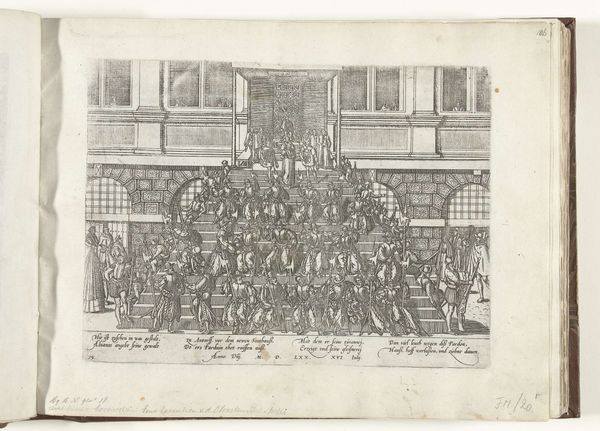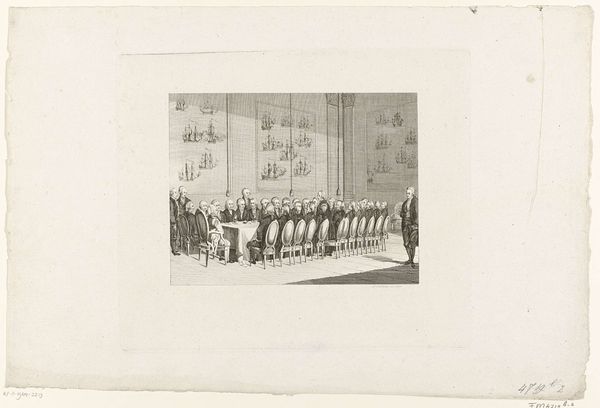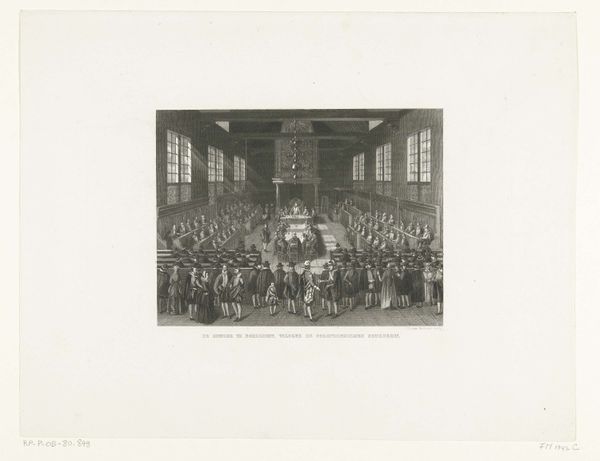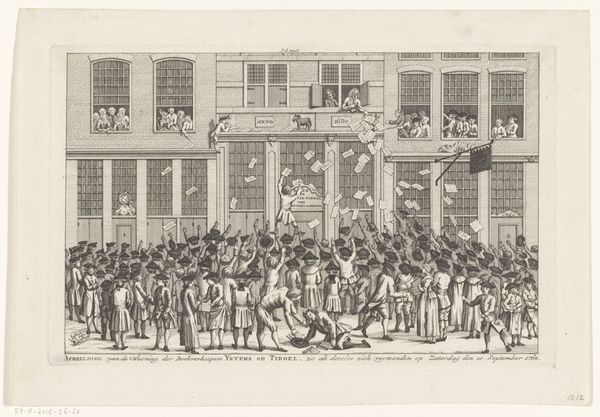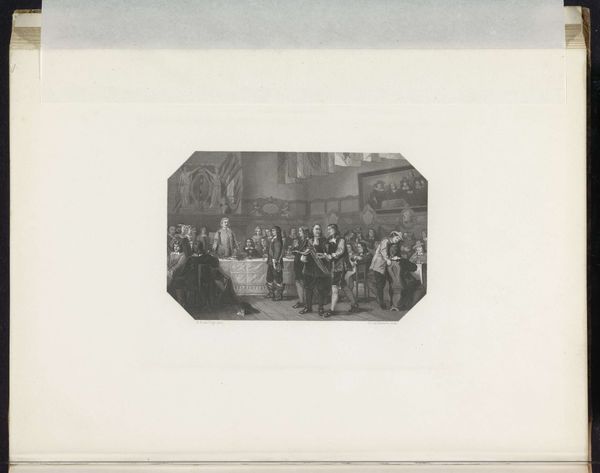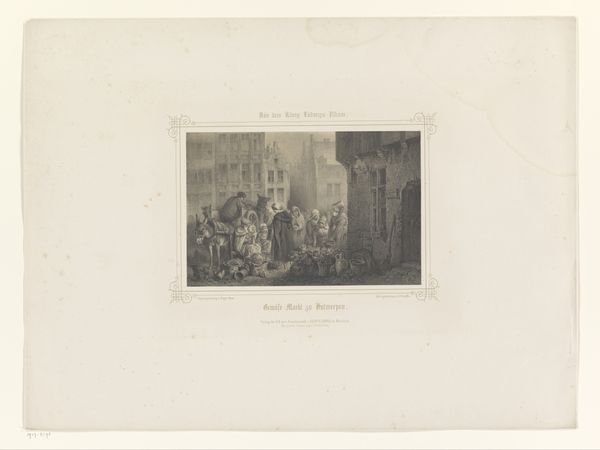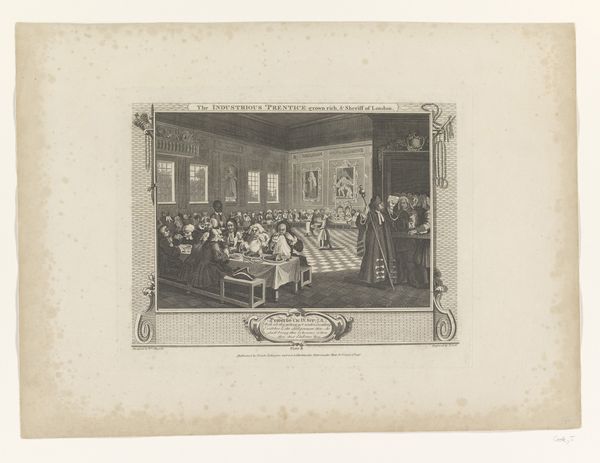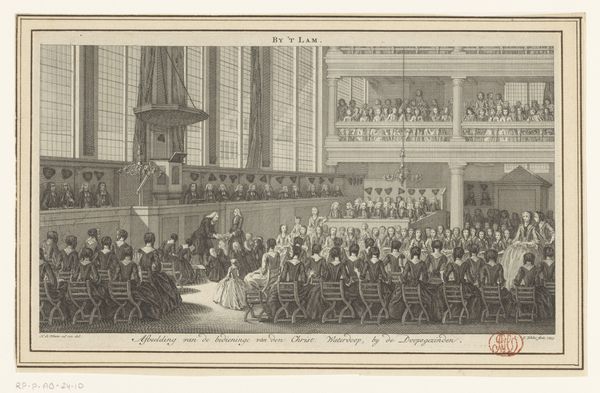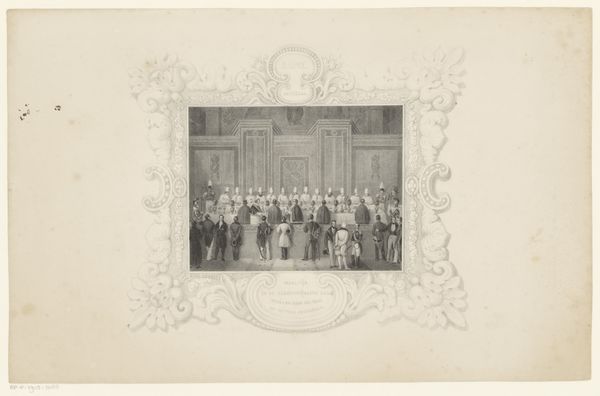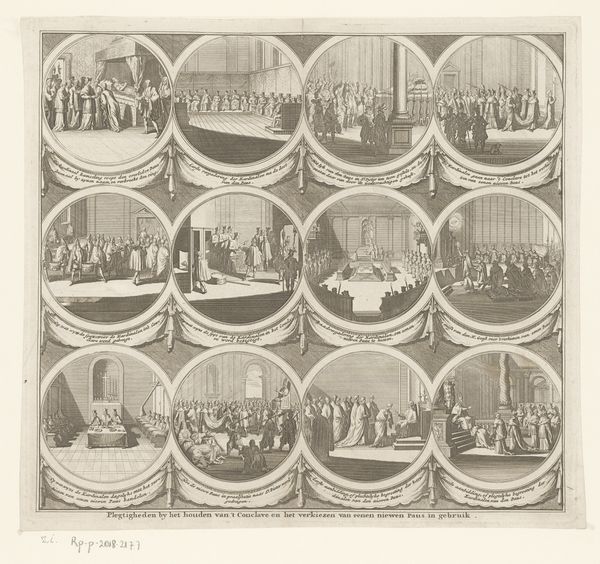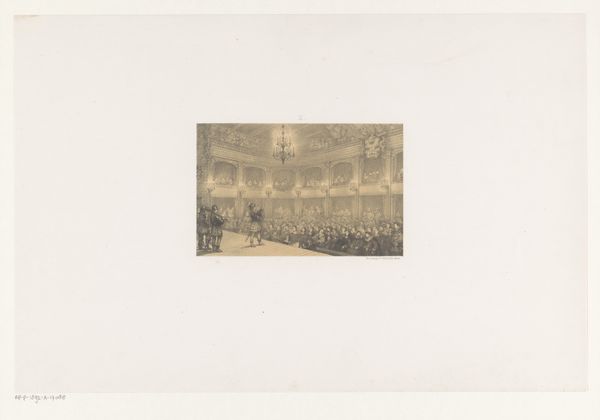
print, engraving
#
baroque
# print
#
genre-painting
#
engraving
Dimensions: height 162 mm, width 265 mm
Copyright: Rijks Museum: Open Domain
Curator: This print, rendered in engraving, depicts the "Holy Communion in the Mennonite Church By the Tower in Amsterdam". It's attributed to Frans de Bakker, dating from 1743. What are your initial thoughts? Editor: The overriding sense is one of rigid order. The composition, while detailed, feels constrained and overwhelmingly dominated by the architectural space and the somber, regimented congregation. The monochromatic palette adds to the severity. Curator: Indeed. Note how de Bakker emphasizes the structure of the space, the rows of identically dressed attendees acting as repeated vertical elements mirroring the windows. It lends a geometric, almost abstract, quality to a figural subject. Editor: Precisely! Viewing it through the lens of social history, such emphasis on order can tell us something about the religious and social structures of the time, how communities regulated themselves visually and physically through dress and posture. What might appear plain to some could embody powerful codes. Curator: The play of light is also essential. Look at how the light enters from the windows, bathing the church in a subtle glow. The architecture isn't just a backdrop but becomes an active element that both contains and illuminates the congregation, almost sanctifying it. It elevates the mundane. Editor: Yes, I find that contrast compelling. Consider how Mennonites, traditionally Anabaptist and therefore often marginalized, constructed these grand spaces to claim public space and civic legitimacy through scale and form. How did the church building act as a social tool, dictating movement and status? Curator: Interesting point. Looking at the piece through that prism also changes our sense of it: it's no longer simply an exercise in representation, but an argument, visually, for recognition. Do you think the Baroque aesthetic serves to reinforce the community ties in the engraving? Editor: The adoption of certain Baroque techniques may seem surprising given typical views on austerity and spiritual community. The interplay may have served as a delicate negotiation with the surrounding society and reflected shifts within the movement. Curator: A lot is happening beyond the superficial representation! It really illuminates, no pun intended, how we can explore the multilayered functions art holds within larger histories. Editor: Precisely. It serves to show how understanding cultural and social contexts can add so much to an artwork, to what at first viewing can be dismissed.
Comments
No comments
Be the first to comment and join the conversation on the ultimate creative platform.

